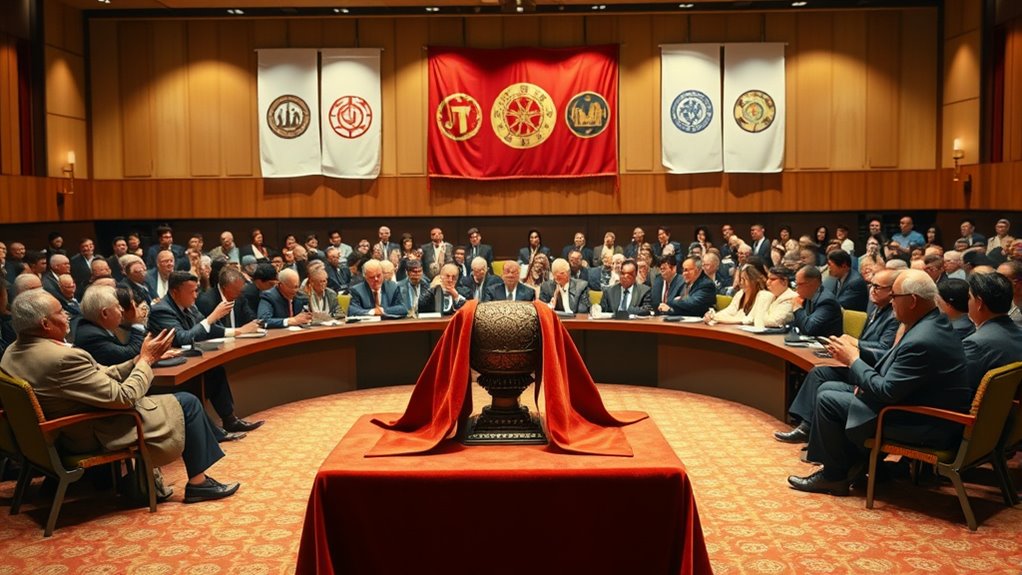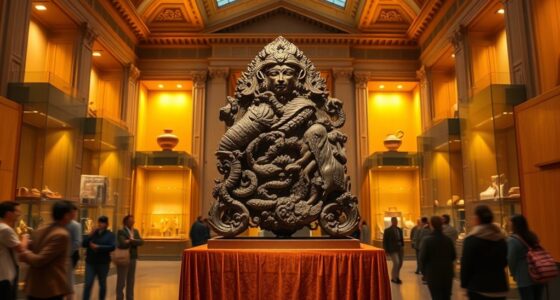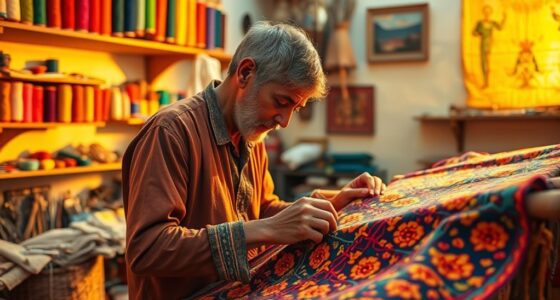The debate over repatriating artifacts to their homelands involves balancing cultural significance with legal and ethical challenges. Critics argue that some objects were looted or acquired unfairly, and returning them can restore identities and histories. However, opponents cite legal complexities, preservation concerns, and diplomatic issues. This ongoing discussion reflects historic power imbalances and modern efforts for justice. To understand the full scope of these arguments and recent examples, consider exploring further.
Key Takeaways
- Repatriation restores cultural identity but faces legal, provenance, and ownership disputes.
- Historical looting and colonialism justify returning artifacts, but complex international laws challenge enforcement.
- Opponents cite safety, preservation risks, and legal ambiguities as barriers to repatriation efforts.
- Repatriation promotes cultural revitalization, national pride, and diplomatic relations between countries.
- Digital and conservation technologies offer alternative solutions amid legal and logistical challenges.
Historical Context and the Roots of Artifact Looting
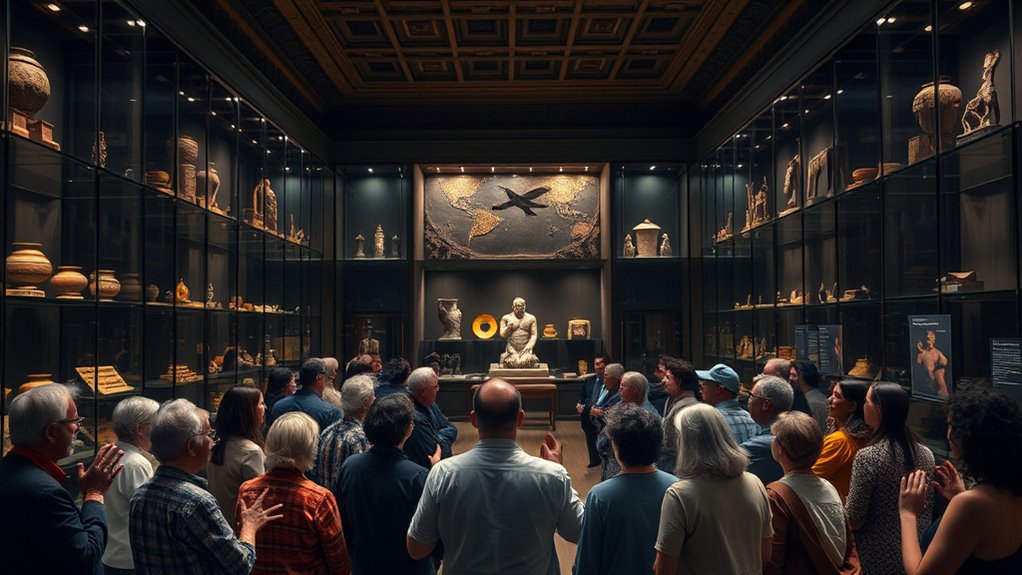
Artifact looting has deep historical roots that trace back to ancient times, where armies and empires took artifacts as spoils of war to demonstrate dominance and wealth. During Roman conquests, Greek art was seized and displayed as trophies, as seen on the Arch of Titus. In the Napoleonic era, armies looted artworks to enrich institutions like the Louvre, turning conquest into cultural capital. Colonial powers systematically removed artifacts from their colonies, especially in Africa, to showcase their dominance and often disregarded local cultural significance. These acts of plunder served as tools to reinforce power imbalances and control. Over centuries, looting spread across continents, affecting diverse cultures and shaping historical narratives by removing objects from their original contexts. This pattern reveals how imperialism and conquest have long fueled cultural theft. Many countries have yet to acknowledge the harm caused by colonial looting, which continues to impact cultural heritage today.
Recent Developments in Repatriation Efforts and Examples

Recent years have seen significant strides in returning stolen cultural heritage to their rightful owners, reflecting a global commitment to preserving history. In 2025, the U.S. government repatriated over 900 Mesoamerican artifacts to Mexico, highlighting ongoing efforts to restore cultural items. The Met returned a Sumerian sculpture to Iraq in 2024 after provenance research confirmed its origin. Homeland Security Investigations also returned 11 artifacts, including jars and a copper axe, to Peru in 2025. These efforts include the repatriation of Nazi-looted art and Benin Bronzes, showcasing international cooperation. Countries like Mexico, Iraq, and Peru have benefited from these initiatives, reclaiming significant artifacts. Such actions promote cultural preservation, strengthen diplomatic ties, and raise awareness about the importance of keeping heritage in its homeland.
Legal and Ethical Frameworks Guiding Return Processes
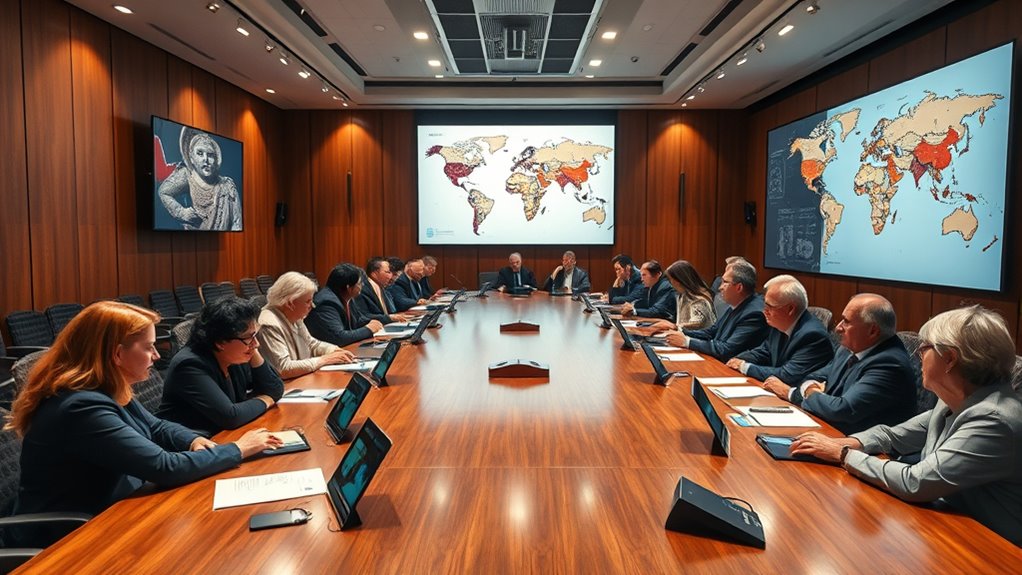
Legal and ethical frameworks play a crucial role in guiding the complex process of returning cultural heritage. You must understand that international agreements like the 1970 UNESCO and 1995 UNIDROIT Conventions set voluntary standards for repatriation, relying on countries’ ratification and political will. These frameworks influence whether artifacts are deemed stolen or legally acquired, but enforcement varies globally. Additionally, U.S. laws such as NAGPRA and ARPA establish clear mandates for Indigenous and federal property. When steering through repatriation, consider that:
- Provenance proof is often complicated by incomplete records.
- Legal statutes may exclude artifacts acquired before certain dates.
- Jurisdictional conflicts arise when objects cross borders.
- Ethical concerns clash with preservation needs, impacting decision-making.
- International standards continue to evolve, shaping the future of artifact repatriation efforts, and the importance of cultural heritage protection is increasingly recognized in these evolving frameworks.
Understanding these layers helps clarify the legal and moral responsibilities involved in artifact return efforts.
Perspectives Supporting Repatriation and Their Rationale
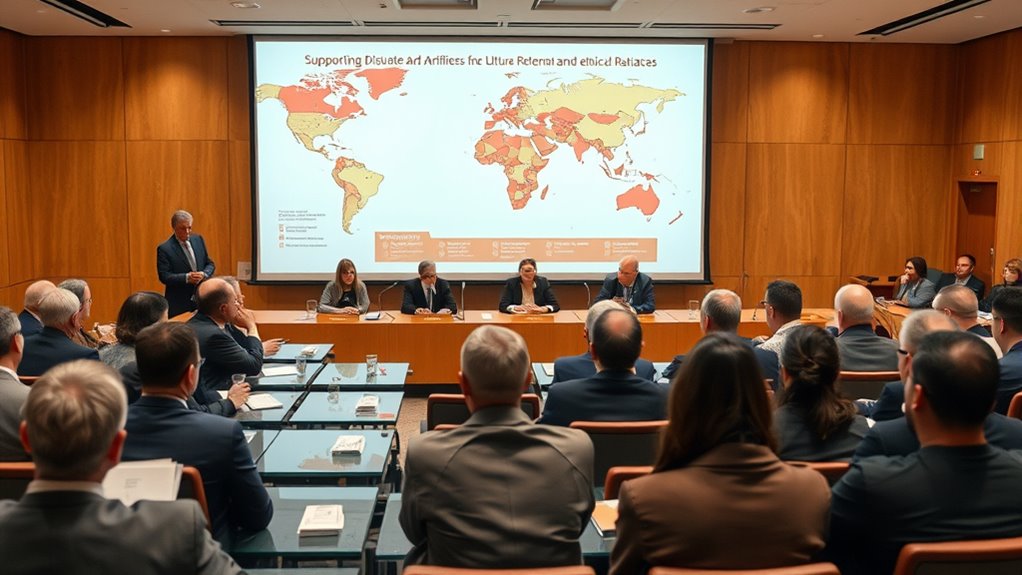
Supporting the return of cultural artifacts is rooted in recognizing their profound cultural and historical significance. These objects embody the identity and heritage of their communities, connecting present generations to their ancestors. Repatriation honors their cultural traditions and helps restore narratives disrupted by colonialism or theft. When artifacts are returned to their original contexts, they educate local populations, fostering pride and continuity. Ethically, returning stolen or illicitly acquired objects addresses past injustices and acknowledges moral responsibilities. It affirmatively restores rightful ownership, and it affirms the sovereignty of source nations and indigenous groups, allowing them to control their cultural heritage. Additionally, repatriation supports cultural revitalization, strengthens national unity, and promotes cultural tourism, which can boost local economies. Recognizing the importance of cultural heritage preservation further underscores the moral imperative for repatriation efforts. Repatriation also enhances cultural identity, helping communities reconnect with their traditions and history. The process often involves complex negotiations and legal considerations, emphasizing the importance of ethical repatriation practices. Moreover, respecting the legal frameworks surrounding cultural property reinforces the legitimacy and sustainability of repatriation initiatives. Overall, these perspectives see repatriation as a crucial act of respect, justice, and cultural empowerment.
Challenges and Concerns Opposing Repatriation Initiatives

While the idea of returning cultural artifacts is compelling, many challenges stand in the way. First, legal and ethical ambiguities make it difficult to determine rightful ownership, as laws vary and provenance is often unclear. Second, cultural shifts over time complicate boundaries, creating disputes about where artifacts truly belong. Third, diaspora communities may claim pieces as their heritage, fueling conflicts. Fourth, international law often lacks enforcement power, leaving repatriation processes uncertain. Safety and preservation concerns also pose issues; sending artifacts to unstable regions risks damage, theft, or loss, while museums argue they provide better security. Additionally, the technology involved in conservation plays a crucial role in deciding whether artifacts can be safely relocated and preserved, highlighting the complexity of balancing cultural justice with practical and legal realities. Furthermore, advances in conservation techniques can influence decisions by improving the ability to protect artifacts during transit and display. Moreover, implementing innovative restoration methods can help mitigate risks associated with repatriation and enhance preservation efforts. It is also essential to consider the impact of modern preservation tools, which can significantly improve the safety and longevity of artifacts during transfer and display. Recognizing the importance of digital repatriation is also growing, offering alternative ways to share cultural heritage without physical transfer.
Frequently Asked Questions
How Do Museums Verify the Provenance of Disputed Artifacts?
You verify the provenance of disputed artifacts by examining records like sale histories, exhibition catalogs, and shipping documents. You analyze correspondence, receipts, and photographs to confirm ownership. You also conduct scientific tests such as microscopy, chemical analysis, and radiocarbon dating to assess authenticity. Experts evaluate stylistic details, compare artifacts, and study historical context. Digital tools like 3D scans, blockchain, and databases help cross-reference information and fill provenance gaps, ensuring thorough verification.
What Are the Financial Implications of Repatriation for Museums?
You face significant financial implications when repatriating artifacts. The costs of provenance research, legal assessments, and logistics add up quickly. Returning items can reduce your collection, affecting visitor interest and revenue. Legal battles and reputational risks also cost money, but transparency and compliance may boost your institution’s image. Additionally, you might lose valuable assets on the black market, and replacing artifacts can strain your budget. Overall, repatriation requires careful financial planning.
How Do International Laws Influence Individual Country Claims?
Think of international laws as a delicate web, guiding your country’s claims on artifacts. These treaties, like UNESCO and Unidroit, set the rules, but enforcement is weak—leaving your nation to navigate a maze of bilateral negotiations and proof burdens. While they influence policies and legal proceedings, ultimately, your country’s ability to claim artifacts depends on domestic laws and diplomatic efforts, making the process as unpredictable as a storm at sea.
What Role Do Private Collectors Play in Artifact Repatriation Debates?
You play a significant role in artifact repatriation debates. As a private collector, your actions influence legislation, public perception, and international cooperation. You can support or oppose repatriation efforts through ownership choices, donations, or collaboration with museums and nations. Your ethical collecting practices and advocacy for policy reforms can help shape a future where artifacts are respectfully returned, preserving cultural heritage and fostering global understanding.
How Can Countries Improve Local Preservation and Security for Returned Artifacts?
You know what they say: “A chain is only as strong as its weakest link.” To improve local preservation and security for returned artifacts, you should invest in climate-controlled storage and specialized conservation labs. Strengthen security with surveillance and trained personnel. Build capacity through legal support, community engagement, and education. By doing so, you create a safer environment where artifacts are protected, respected, and cherished for generations to come.
Conclusion
You see, repatriating artifacts isn’t just about returning objects; it’s about restoring cultural identity. Imagine a museum returning a stolen Egyptian relic to its homeland, strengthening national pride and heritage. While challenges exist, respecting origins can foster global understanding and justice. Embracing repatriation shows you’re committed to ethical stewardship, honoring the stories and histories that belong to the communities they originate from. Ultimately, it’s about doing what’s right, not just what’s easy.

